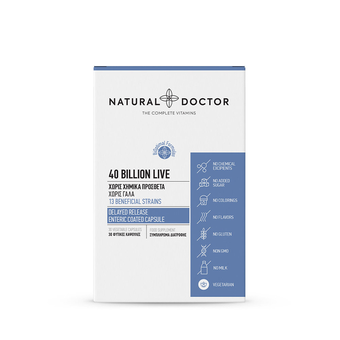Healthy microbiome healthy skin

The skin has many essential functions. First, it protects the body from external threats as the immune system's first line of defence. It prevents dehydration since it can cool the body when the external temperatures are high and hosts a massive network of nerves that sense external factors.
Another essential function is trillions of microbes and their genetic material on the skin, also known as the skin microbiome. These microbes are bacteria, fungi and viruses, vital to the health of the body.
The skin microbiome communicates with skin cells and the immune system to create and maintain the skin barrier and ensure good skin health. When the microbial balance is disturbed, and pathogenic microbes dominate instead of beneficial ones, then the function of the skin is disrupted, resulting in infections or skin diseases.
Microbes protect human skin
The skin microbiome includes three micro-environments: oily, moist and dry. Each has a diverse population of microbes. For example, sebaceous glands that secrete fat, such as those on the forehead, are dominated by the bacterial genera Cutibacterium and Staphylococcus.
Areas of skin that are moist, such as the inside of the elbow and the bottom of the feet, have high levels of bacteria that thrive in wet environments, such as Corynebacterium and Staphylococcus. All three bacterial genera are present in areas where the skin is dry.
Skin microbiome protects the human body in several ways:
- It regulates the formation of the outer skin layer (stratum corneum), facilitating the typical structure and function of the skin barrier.
- It also prevents invasion, colonization and contamination by pathogenic microbes that can cause disease.
- Certain types of skin bacteria produce antibiotics, inhibiting harmful bacteria activity.
- Beneficial microbes are also fundamental in stimulating immune cells in the skin and promoting wound healing.
On the skin, there are only vital proteins and fats, making it a complex environment for microbes to survive, and for this reason, skin microbes are particularly resistant. Skin microbes have adapted to use elements found in sweat, natural oils and dead cells found in the outer layer of the skin.
Environmental factors can affect the balance of beneficial and pathogenic microbes in the skin microbiome, including climate, pollution, UV radiation, cosmetics, soaps and antibiotics.
Loss of skin microflora & skin diseases
Loss of skin microflora diversity can contribute to acne. Certain pathogenic bacteria can trigger an inflammatory response in the skin that forms a barrier, making it difficult for antimicrobial acne treatments to penetrate the skin.
Dandruff is associated with fungi that cause an overproduction of oleic acid. This situation disrupts the cells in the outer layer of the skin and causes an inflammatory response in the scalp.
Atopic dermatitis, or atopic eczema, can occur when the pathogenic bacterium Staphylococcus aureus predominates over others on the skin.
Although the exact causes of alopecia areata are unknown, some research links it to an imbalance in the microflora found in hair follicles.
A balanced microbiome improves skin health
Probiotics, specifically Lactobacillus and Bifidobacterium species, protect the body from oxidative stress and photodamage. Moreover they help the skin barrier function while enhancing the skin's natural hydration.
A suggestion from Natural Doctor
Natural Doctor, 40 Billion Live nutritional supplements include forty billion beneficial bacteria from 13 Lactobacillus and Bifidobacterium species that support a healthy skin microbiome from the inside out.
It is a high-potency formula in an enteric-coated capsule with time-release technology. At the same time, it does not contain milk, so it is also suitable for people who are lactose intolerant.



